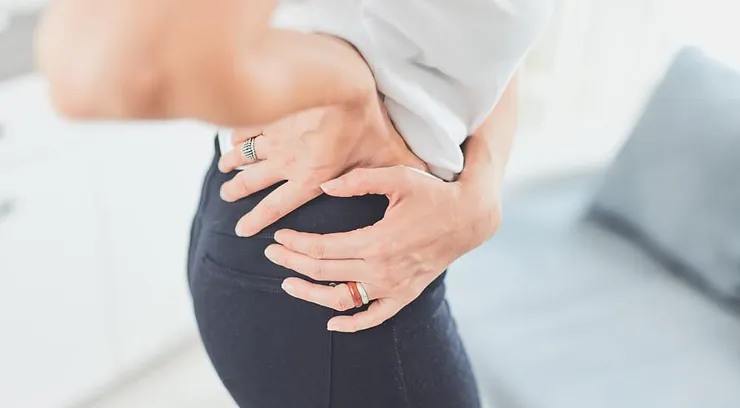What is it?
Hip arthritis is inflammation of the hip joint. There is many different types of arthritis such as osteoarthritis, rheumatoid arthritis, psoriatic arthritis, and many others. This article will mainly discuss hip osteoarthritis. Hip osteoarthritis is a condition where the cartilage in the hip joint wears down, causing pain and difficulty with movement. This can happen due to a number of factors, including injury, aging, or wear and tear with repetitive movements. Let’s learn more about this type of hip arthritis.

What are the signs and symptoms?
The symptoms of hip arthritis can include:
-
Pain in the hip or groin, which may be a dull ache or a sharp, burning sensation
-
Stiffness in the hip, especially in the morning or after sitting for long periods
-
Reduced range of motion in the hip, making it difficult to move the leg or walk
-
Weakness in the hip or leg, which can cause difficulty with standing, climbing stairs, or bearing weight
-
A clicking or popping sound in the hip joint when moving
-
Limping or favouring one side while walking
How is it treated?
Your physiotherapist will focus on massaging and stretching the muscles around the hip. Treatments such as active release is particularly effective at decreasing pain and improving flexibility in a hip with osteoarthritis. Acupuncture will also be effective a reducing pain as well as promote better muscle contraction in the hip musculature.
It is very important to strengthen the muscles around the hip. Weakness in the hip muscles will cause the bones of the hip joint to grind against each other. Strong hip muscles will help decompress the hip joint allowing for better pain free movement. There is ample scientific research to support that a comprehensive physiotherapy exercise program that involves core and hip exercises is very effective at rehabilitating hip osteoarthritis.
Common Home Exercises
Bridge
-
Lie on your back with your knees bent and your feet flat on the floor. Keep your arms at your sides, with your palms facing down.
-
Tighten your abdominal muscles and press your lower back into the floor.
-
Slowly lift your hips up off the floor by pushing through your heels, keeping your knees in line with your feet.
-
Hold the position at the top for a few seconds, squeezing your glutes and lower back muscles.
-
Slowly lower your hips back down to the starting position.
-
Repeat the exercise for 10-15 repetitions.
It’s important to keep your core engaged and your back flat throughout the exercise. Avoid arching your back or letting your hips sag. You can make this exercise more challenging by adding a leg lift or by placing a resistance band around your knees.

Lunge
-
Stand up straight with your feet hip-width apart.
-
Take a large step forward with one foot, keeping your feet facing forward.
-
Lower your body by bending both knees, making sure your front knee is directly above your ankle and not past your toes.
-
Keep your chest up and your back straight as you lower your body. Your back foot should be on the ball of your foot with your heel lifted.
-
Push through your front heel to return to the starting position.
-
Alternate legs, lunging with the other leg. Repeat the exercise for 10-15 repetitions.
It’s important to keep your core engaged and your back straight throughout the exercise. Make sure that your front knee is not past your toes and your back knee is almost touching the floor.

Standing Hip Fire Hydrant
-
Start by standing up straight with your feet hip-width apart.
-
Place your hands on your hips, or hold onto a sturdy object for balance if needed.
-
Keep your knee straight and kick your leg back behind you and to the side at a 45 degree angle. Slowly lower your leg back down to the starting position.
-
Repeat the exercise for 10-15 repetitions on one leg before switching to the other leg.
It’s important to keep your core engaged and your back straight throughout the exercise. This exercise can be performed with or without additional weights or resistance band.


